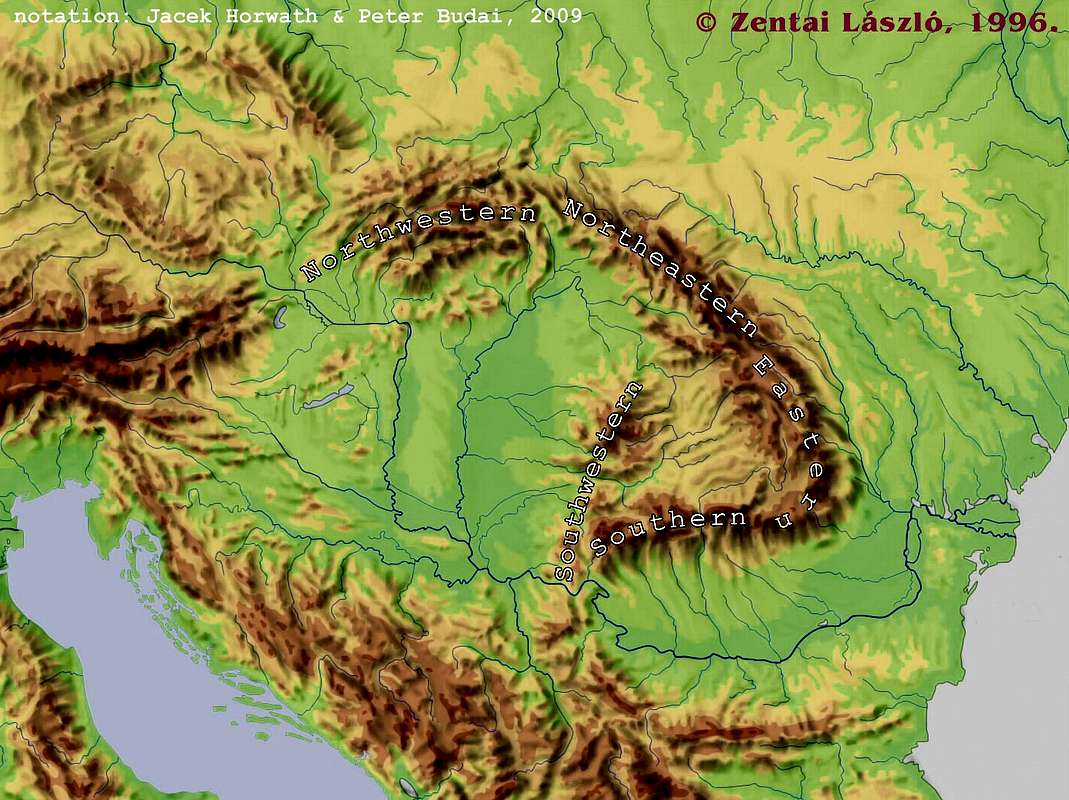The mountains and rivers of the area have had significant influence on the history of the Balkans. Additionally, the strategic location of the Balkans as a (semi) peninsula serves as an important factor as well.
I have included a geographic map of the Balkans region to serve as a reference as I refer to certain geographic features.
There are three mountain ranges present in the Balkans. The mountain range which stretches on the coastline from north-western Croatia to Greece is the Dinaric Alps range. This range is an extension of the famous Alps mountain range that comes from Switzerland and Austria. The large mountains in the northeast Balkans are the Carpathian mountains. These are located in Romania and Slovakia. The third and smallest mountain range is the Balkan Mountain range located in Bulgaria.
These mountains have created interesting ecological regions from a topological perspective. Lower regions include the valuable nutrient-rich farmland and higher regions include the rocky wastelands. Differing ecological regions have allowed for many different types of people groups to live in close proximity: herders, traders, farmers, and forest dwellers. Lower regions are more valuable and productive than less fertile areas in the higher altitudes. As a result, cultures and ethnicity that have lost over the centuries have been driven from the coasts and valleys up to the mountains.
Though there are many smaller rivers in the Balkans region, the Danube is the largest and most influential. Many of the smaller local rivers arise from the mountains on the coast and quickly deposit into the ocean. They are too small to carry any river traffic and are not long enough to connect cities. The Danube has had a significant impact on the area, however. The Danube River enters the Balkans through the Hungarian Plain in the northwest, continues into Serbia through Belgrade, and then exits into the Black Sea via Romania. However, the river has proven to be difficult for the local people groups to use. In addition to variable seasonal water levels and marshy banks, the Iron Gates have provided difficulty in commercial ship navigation for centuries. Rather than help bring wealth to the area, the Danube has attracted more problems from its co-owners (Germany, Russia, Turkey).
As a peninsula, the Balkans have also served as an important 'stepping stone' in history. Romania is directly opened to the steppes of Ukraine, and the Hungarian plain and Danube river valley have all offered easy routes for invasion. As a crossroads for Asia and Europe, this area has been highly contested. Only by understanding the geography of the region will we be fully able to understand how the various people groups in the region have come to be.
Frederick Grimm


No comments:
Post a Comment